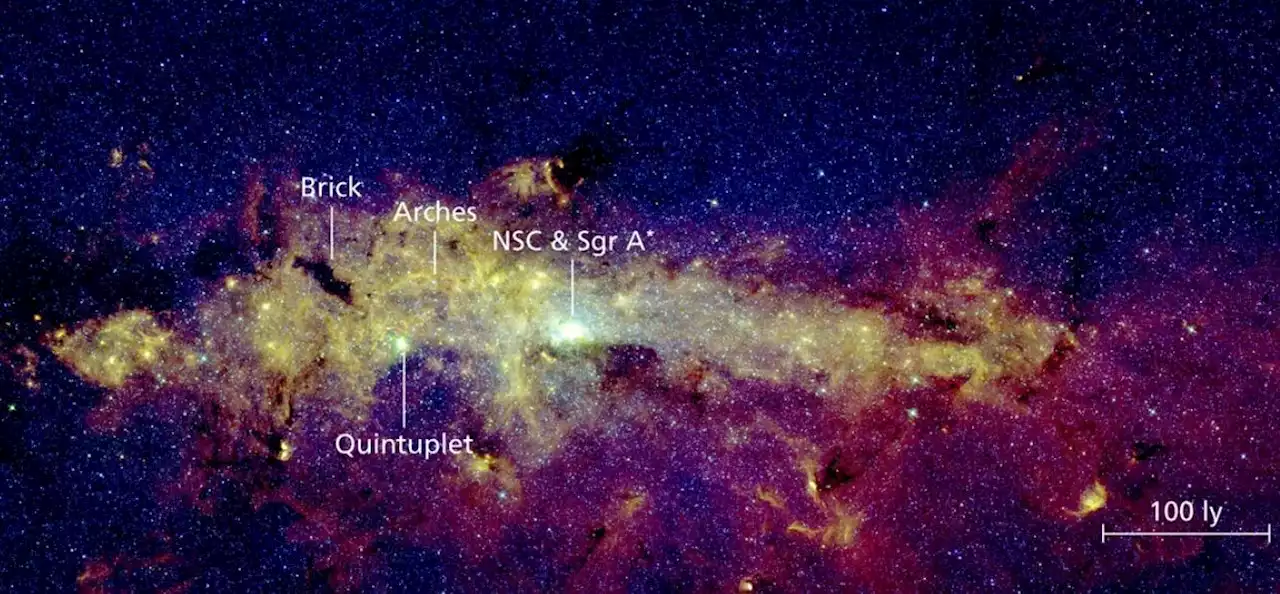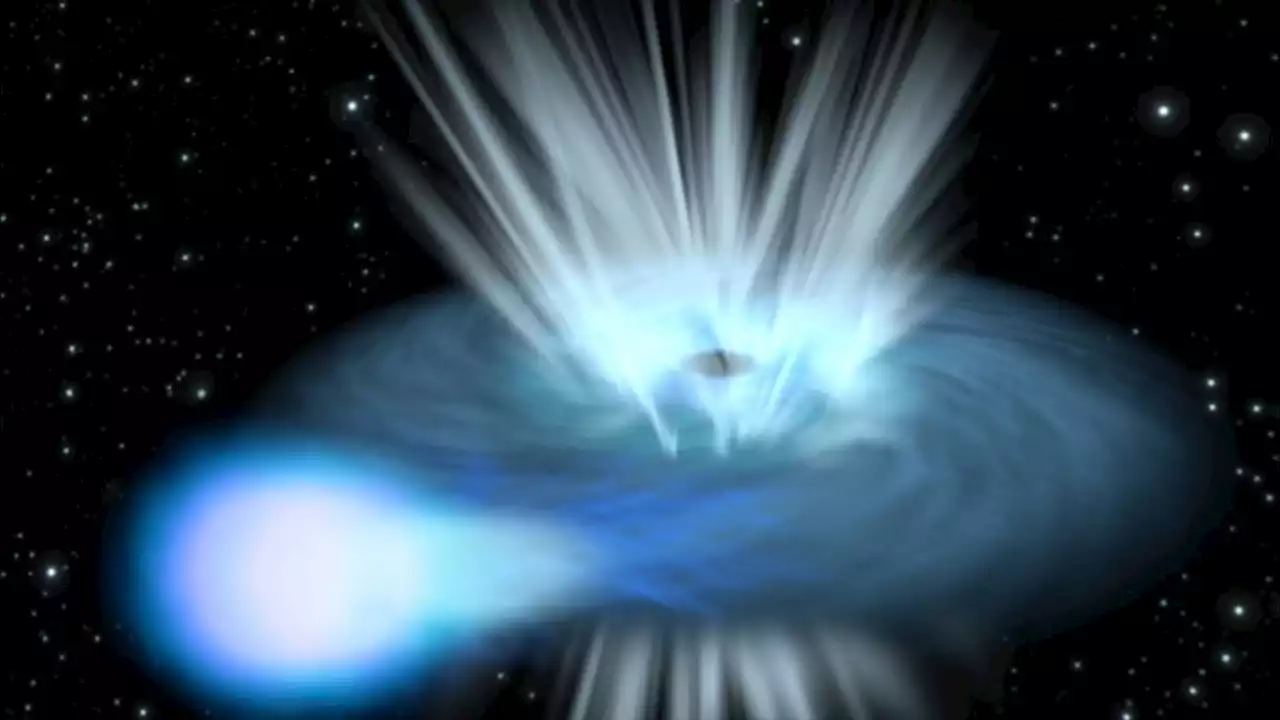Seeing this cosmic artifact could give astronomers some vital clues to how the magnetic fields of galaxies like the Milky Way came to be.
. When this happens, the light waves oscillate along a preferred direction instead of randomly. When ALMA detected and mapped the more polarized signal coming from galaxy 9io9, it confirmed the presence of a magnetic field in a very distant galaxy for potentially the first time.
The team hopes that with this new discovery and future observations of distant magnetic fields, astronomers will get closer to how fundamental components of galaxies form. Laura is a science news writer, covering a wide variety of subjects, but she is particularly fascinated by all things aquatic, paleontology, nanotechnology, and exploring how science influences daily life.
United States Latest News, United States Headlines
Similar News:You can also read news stories similar to this one that we have collected from other news sources.
 JWST Gazes into the Dark Molecular Clouds at the Heart of the Milky WayThere’s an unusual object near the Milky Way’s heart that astronomers call “The Brick.” It’s a massive cloud of gas called an infrared dark cloud (IDC). The Brick is dense and turbulent like others of its type, but for some reason, it shows few signs of star formation. Why? The Milky Way’s Central Molecular Zone … Continue reading 'JWST Gazes into the Dark Molecular Clouds at the Heart of the Milky Way'
JWST Gazes into the Dark Molecular Clouds at the Heart of the Milky WayThere’s an unusual object near the Milky Way’s heart that astronomers call “The Brick.” It’s a massive cloud of gas called an infrared dark cloud (IDC). The Brick is dense and turbulent like others of its type, but for some reason, it shows few signs of star formation. Why? The Milky Way’s Central Molecular Zone … Continue reading 'JWST Gazes into the Dark Molecular Clouds at the Heart of the Milky Way'
Read more »
 Astronomers Spot Furthest-Ever Galactic Magnetic FieldThe ancient galaxy's magnetic field, 16,000 light-years across, is the furthest astronomers have ever detected.
Astronomers Spot Furthest-Ever Galactic Magnetic FieldThe ancient galaxy's magnetic field, 16,000 light-years across, is the furthest astronomers have ever detected.
Read more »
 New ring galaxy discovered by Indian astronomersBy analyzing the data from the Dark Energy Camera Legacy Survey (DECaLS), astronomers from the Christ University in Bangalore, India, have serendipitously discovered a new ring galaxy, which received designation DES J024008.08-551047.5 and may belong to the rare class of polar ring galaxies. The finding was reported in a paper published August 29 on the pre-print server arXiv.
New ring galaxy discovered by Indian astronomersBy analyzing the data from the Dark Energy Camera Legacy Survey (DECaLS), astronomers from the Christ University in Bangalore, India, have serendipitously discovered a new ring galaxy, which received designation DES J024008.08-551047.5 and may belong to the rare class of polar ring galaxies. The finding was reported in a paper published August 29 on the pre-print server arXiv.
Read more »
 Astronomers Uncover Exoplanet With an Unprecedented OrbitUsing TESS, scientists identified two long-period exoplanets, TOI-4600 b and c. These discoveries open new research avenues in understanding exoplanets, and the findings emphasize the significance of collaborative efforts, including contributions from amateur astronomers. Scientists from The Univ
Astronomers Uncover Exoplanet With an Unprecedented OrbitUsing TESS, scientists identified two long-period exoplanets, TOI-4600 b and c. These discoveries open new research avenues in understanding exoplanets, and the findings emphasize the significance of collaborative efforts, including contributions from amateur astronomers. Scientists from The Univ
Read more »
 Astronomers discover new massive quiescent galaxyAstronomers report the discovery of a new massive and quiescent galaxy at a high redshift. The galaxy, which received designation COSMOS-1047519, was detected using the Keck I telescope. The finding was detailed in a paper published August 29 on the pre-print server arXiv.
Astronomers discover new massive quiescent galaxyAstronomers report the discovery of a new massive and quiescent galaxy at a high redshift. The galaxy, which received designation COSMOS-1047519, was detected using the Keck I telescope. The finding was detailed in a paper published August 29 on the pre-print server arXiv.
Read more »
 Astronomers discover new class of cosmic explosion brighter than 100 billion sunsDubbed 'Luminous Fast Coolers,' this new class of extreme cosmic explosion is incredibly rare — and unbelievably bright.
Astronomers discover new class of cosmic explosion brighter than 100 billion sunsDubbed 'Luminous Fast Coolers,' this new class of extreme cosmic explosion is incredibly rare — and unbelievably bright.
Read more »
